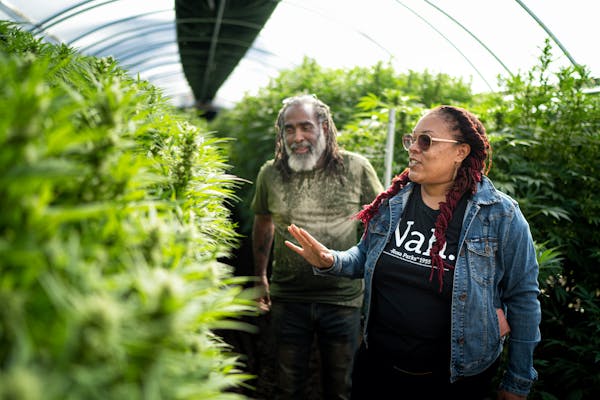Minnesota farms are growing in size but shrinking in number, according to the latest U.S. Department of Agriculture census released Tuesday.
The once-every-five-years USDA agricultural census, which tracks data on producers earning more than $1,000 a year, found the average Minnesota farm in 2022 was 388 acres, up 17 acres from 2017.
Nationally, more U.S. farms are closing and fewer acres are devoted to farmland than five years ago, Tom Vilsack, USDA secretary for the Biden administration, said in remarks Tuesday.
"This survey is a wake-up call," Vilsack said. "As a country, are we OK with losing this many farms? Are we OK with losing that much farmland? Or is there a better way?"
Thousands of Minnesota farms shuttered during the census' time period, dropping to 65,531 from more than 68,000. The state lost nearly 1,500 dairy farms, but added 2,000 more dairy cows compared to five years earlier.
The farmers left standing earned more income with the average Minnesota farm in 2022 reporting $141,869 in net cash income — more than double 2017 levels ($65,753). Still, expenses, such as fuel and fertilizer, have also increased. And land for renters has increased, too.
In 2017, the average price-per acre of Minnesota farmland didn't hit $5,000; today, land averages more than $6,000 an acre.
The ag census spans thousands of counties, bureaus and parishes across the country, from sugar beet acres to tobacco farms, recording everything from race and gender to broadband hook-up.
On a national level, the latest report showed 142,000 fewer farms and nearly 20 million fewer acres of farmland than in 2017. Vilsack said the country has lost more than half a million farms since the early 1980s.
One of the closest watched categories in Minnesota has been farmers' demographic profiles, particularly amid a growing emphasis by state and federal officials to encourage younger farmers and farmers of color. As historically has been the case, Minnesota farming remains almost entirely white.
The average Minnesota farmer in 2022 was male and 57.1 years old — up from 56.5 in 2017.
It's a stereotypical image for agricultural producers that looks largely the same as in 2017, the last time the federal ag census — which dates back to 1840 — took the pulse of the producers, livestock and crop makeup of America's agriculture industry.
Of the nearly 115,000 farmers who reported race on the survey in the state, over 99% were white. Black farmers (61), Native (244) and Asian (306) comprised other categories.
Minnesota's agriculture agency has worked, often with direction from the Legislature and governor, to encourage and assist young and beginning farmers to buy equipment and land. Farm associations for African immigrant and Hmong farmers have also developed in recent years.
"Hopefully we're doing things to really encourage that next generation," said Thom Petersen, Minnesota Department of Agriculture commissioner.
Petersen said his staff has only begun to dig through the numbers, but a couple categories jumped out, including the growth in farms of more than 1,000 acres and farms between 10 and 49 acres.
"Not a surprise," Petersen said. "The bigger farmers got bigger, and the smaller farmers also got bigger."
In a boon for climate-smart agricultural practices, Minnesota farmers planted more than 760,000 acres of cover crop in 2022, a 31% increase over 2017.
Nationally, the average farm income rose from about $43,000 in 2017 to nearly $80,000 in 2022. According to Food and Water Watch, a Washington, D.C., nonprofit that often scrutinizes industrial agriculture, the numbers also reveal a nearly 47% increase in confined animals across the country, up to 1.7 billion, since 2002.
